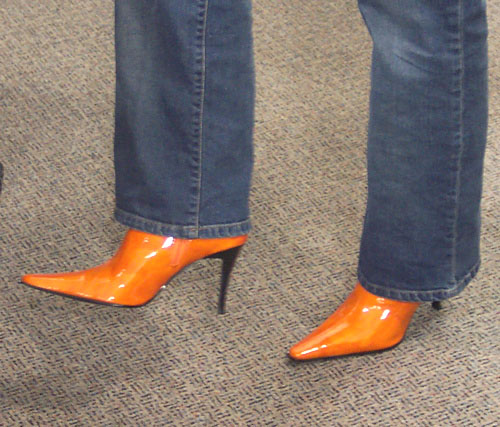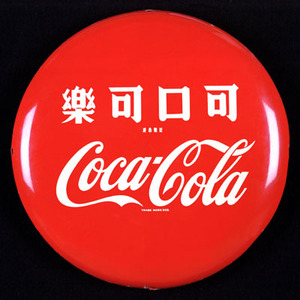 |
Founded by designer Alison Mary Ching Yeung in 2006, Mary Ching is one of the first high-end footwear and accessories brands to emerge from mainland China. Driven by Alison’s own eclectic aesthetic, Mary Ching seamlessly fuses Asian elements with vintage fashion without ever succumbing to “East Meets West” conventions. A regular sight at her flagship boutique on Ferguson Lane, which opened in 2009, Alison will appear next in London at theWalpole British Luxury Summit on May 17, where she will
speak about the luxury market in the Greater China region.
 |
| Mary Ching creative director Alison Mary Ching Yeung |
Recently, Jing Daily spoke to Alison about Mary Ching and her thoughts on the potential for homegrown Chinese luxury brands.
Jing Daily (JD): Tell us a little about Mary Ching.
Alison Mary Ching Yeung: If “Alice In Wonderland” had a sexy boudoir, it would be the Mary Ching boutique in Shanghai. Mary Ching gave her virginity to the city as China’s first luxury shoe and accessories brand in 2008. The products include vertiginous platform stilettos, saucy d’orsay pumps, and elegant flats in tantalizing textures and shades.
The flagship boutique…on Ferguson Lane showcases a delightful treasure box. In May 2010, ELLE France described Mary Ching as “La Louboutin Shanghaienne.” Mary Ching has also joined the mile high club on Cathay Pacific and Dragon Air, where we sell leather and cashmere slippers, and is included in the permanent collection of the Victoria & Albert Museum to represent contemporary Chinese design. Mary Ching was shortlisted as a finalist for the “Creativity Award” sponsored by BP for the British Business Awards.
As the founder, I was always accused of having a shoe sickness by my father. So what better way to transform a sickness to a viral disease!
JD: Where and who are your target customers? Who have been your best customers to date? Where are they located? How do most of your customers find you?
 |
| Mary Ching, the Jennifer shoe £259 (€299, $399, ¥2,600) |
Alison: With the luxury market so large, fast-growing and young, there is a growing number of sophisticated and self-confident consumers willing to move beyond established big label brands and to try new, young and cutting edge designs to express their individuality. This trend can also be partly seen in the “discovery” of local brands by increasingly patriotic Chinese consumers.
The Mary Ching collector is a cosmopolitan, independent and young professional women aged between 25 to 40 years old. She is determined to make her own (fashion) statement and to be a fashionista trendsetter. It is a phenomenal market like no other where in second-tier cities, young professional women are willing to spend two or three months salary on purchasing luxury items.
Core customers are primarily in Asia but also are found in all corners of the world.
Clients and customers find us through fashion magazines exposure, online social networking and fundamentally through word-of-mouth. I am proud to say, ” We are the best-kept secret in the world.”
JD: Do you feel that China is ready for a domestic luxury brand like your own? What does it need to be ready?
Alison: While this trend is just at the initial phase, I like to refer to it as “the early stages of dating”: our brands are succeeding in seducing the consumer, and we are now close to the first kiss.
With the world’s attention on the booming mega-cities of China, Chinese fashion brands are quickly stepping into the spotlight. As the economy grows rapidly, so have the taste, habits and purchasing power of the Chinese people. As a consequence, local Chinese brands are moving to fulfill demand both at home and abroad. While in par, these up and coming Chinese brands are quick to learn successful retail strategies, marketing campaigns and powerful advertising from foreign brands entering China.
 As the founder of Mary Ching, my vision is to create the first iconic Chinese luxury footwear and accessories brand. Vogue Editor Angelica Cheung once told me, “Keep doing what you do, as you are the only one doing it.” Her statement reflects how big the opportunity still is today in China.
As the founder of Mary Ching, my vision is to create the first iconic Chinese luxury footwear and accessories brand. Vogue Editor Angelica Cheung once told me, “Keep doing what you do, as you are the only one doing it.” Her statement reflects how big the opportunity still is today in China.
I started Mary Ching believing that luxury homegrown luxury brands would be the future. As a “Eurasian” — as my father is Chinese and my mother British — I think there is a space for designers with Chinese heritage like myself to be educated abroad and then return to their roots.
 JD: You’re very plugged into the luxury or fashion landscape in Shanghai. Could you describe your impressions of it? What events or strategies have you seen as successes?
JD: You’re very plugged into the luxury or fashion landscape in Shanghai. Could you describe your impressions of it? What events or strategies have you seen as successes?
Alison: China is currently the fastest-growing and second-largest luxury goods market in the world, second only to Japan. It is expected to reach the number one spot by as early as 2015. In 2009 Chinese consumers purchased 27.5 percent of the world’s luxury goods at a total of US$9.4 billion, in comparison to 2004 when their total was only $2 billion. In addition, the majority of China’s wealthy are young, with 80 percent below 45 years of age, compared to 30 percent in the United States and 19 percent in Japan.
 There is no more exciting place to be than in Asia today. Chinese designers like me are in an advantageous position, as the Chinese media and press welcome us with open arms. Furthermore, there is increased government support to nurture Chinese luxury brands. I feel the brand is a success because Mary Ching has combined two different spirits to make a irresistible cocktail craved by all fashion addicts.
There is no more exciting place to be than in Asia today. Chinese designers like me are in an advantageous position, as the Chinese media and press welcome us with open arms. Furthermore, there is increased government support to nurture Chinese luxury brands. I feel the brand is a success because Mary Ching has combined two different spirits to make a irresistible cocktail craved by all fashion addicts.
There are more and more young designers rising to international attention. A trend of locally born fashion brands, which is now in its infancy, will reach maturity in due course. Watch this space.
Mary Ching has seen success through a combination of marketing events (such as high-end fashion shows in Hangzhou, Shanghai and Beijing), exposure through Shanghai fashion week, and endorsements via Chinese celebrities and socialites. In par with these brand-building events, the strategy has been to focus on China and, most importantly, to keep a level of sophistication and high standards in creating a luxury brand.
To use an old Chinese proverb that best represents my philosophy, “When you hear something, you will forget it. When you see something, you will remember it. But not until you do something, will you understand it.”
Special thanks to Alison Mary Ching Yeung. Be sure to check out Mary Ching products on the Mary Ching website, or at its Shanghai boutique (376 WuKang Road, boutique 106). Mary Ching is also available at stores such as Brand New China (Beijing), Younik at Bund 18 (Shanghai), and Forest Bird(Hong Kong), as well as hotels like the Shangri-La (Beijing, Shanghai and Hong Kong), Peninsula (Shanghai) and Mandarin Oriental (Hong Kong). Full stocklist here.










